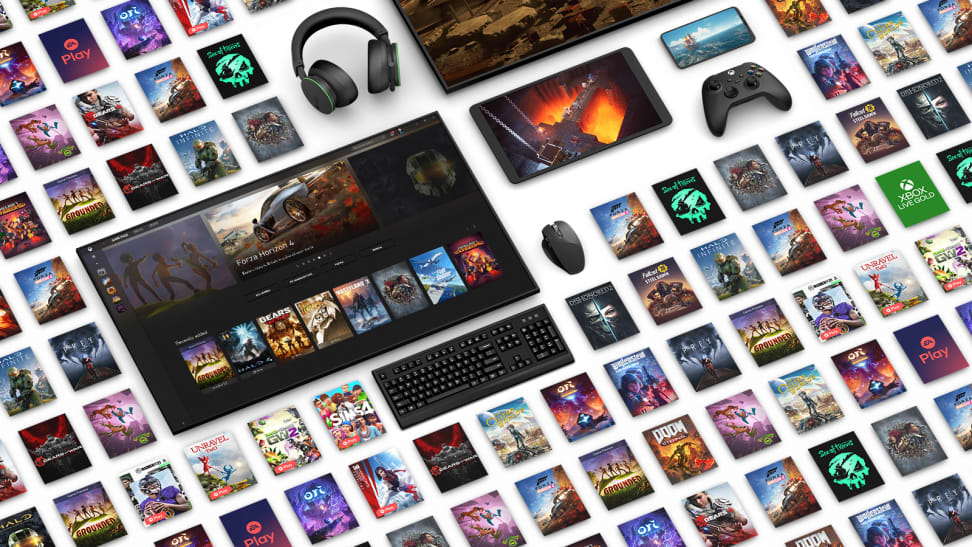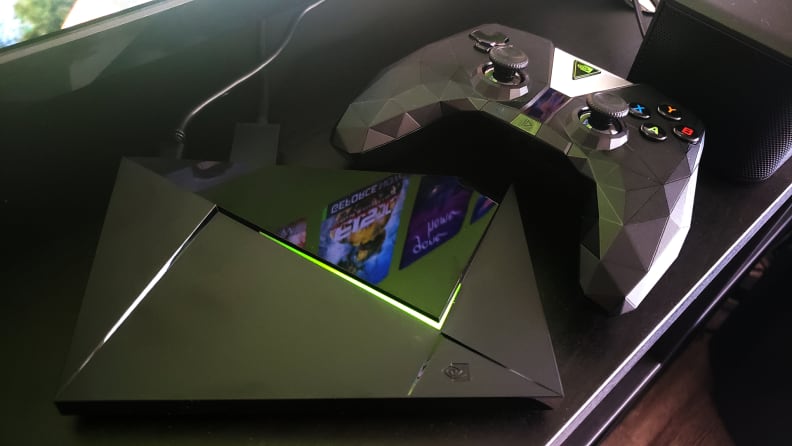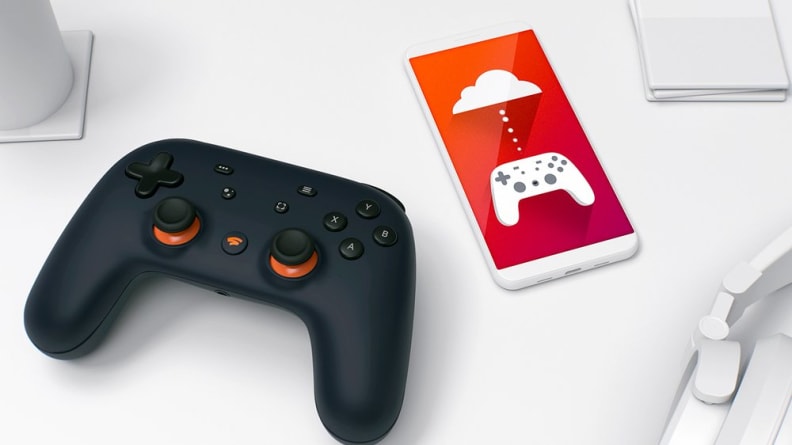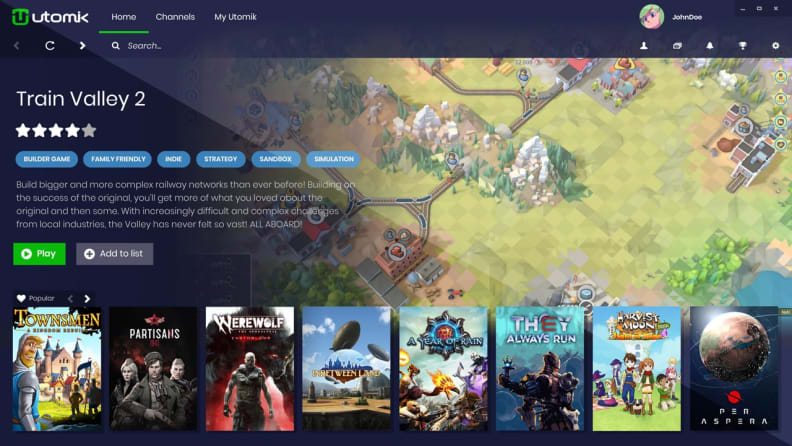Every major cloud gaming platform explained
Cloud gaming is growing—here are our favorite platforms.
 Credit:
Microsoft / Xbox
Credit:
Microsoft / Xbox
Products are chosen independently by our editors. Purchases made through our links may earn us a commission.
If you’re not familiar with cloud gaming—also called game streaming or cloud streaming—it’s sort of like the gaming version of streaming a movie on Netflix. You remotely connect to a virtual PC through a cloud gaming app or internet browser and play the game from there. There’s no hardware, cables, waiting for games to install and download, firmware to update, or anything else that usually comes with playing games on a local machine like a PS5, Xbox Series X, or a laptop.
However, a standard cloud gaming subscription model does not exist, so to make things easier we rounded up several of the most popular cloud gaming platforms and broke down their cost, features, and game availability. Whether you buy your games individually or play so many games you need a pass that gives you access to hundreds at once, there’s a cloud gaming platform out there that should suit your needs.
What do I need for cloud gaming?
For optimal cloud gaming, we recommend a wired (Ethernet) connection with a download speed of at least 50Mbps. A 5.0GHz, 4G LTE, or 5G wireless connection will also work, but a wired connection will ensure a stable connection. Most cloud gaming platforms say you only need about 15-25Mbps, depending on the resolution setting. But if you have multiple internet users in your household, you’ll need more total available bandwidth to maintain a constant connection.
Other than that, you’ll need a device that can stream video, like a Chromebook or tablet, and a few peripherals, like a mouse or game controller. (We do not recommend using touch controls on mobile devices as their implementation is shaky, at best.)
However, there are some hardware requirements. For instance, your device needs to have a fast enough processor and graphics card, and enough memory to handle video streaming. (Check the specific cloud gaming service’s requirements if you are not sure if your device can support cloud gaming.)
That’s it! No bulky game consoles, no worrying if that used GPU you bought from a crypto miner is going to last longer than a year—cloud gaming is a great way to eliminate some technical headaches and save some cash. And nearly all these cloud gaming platforms can be installed on new Samsung TVs like the S95B OLED in Samsung’s Gaming Hub via firmware update.
Nvidia GeForce Now

The best cloud gaming service you can subscribe to is GeForce Now. It has the largest library of compatible games, and it runs on nearly every platform. It’s unlike most cloud gaming services in one major way: It doesn’t double as a virtual storefront. You purchase games separately via Steam, Epic, GOG, or Ubisoft Connect, and then sync them to your GeForce Now account. So, if you ever decide you don’t want to use GeForce Now you won’t lose access to your games.
Nvidia offers three separate tiers of service: Free, Priority, and RTX 3080. The Free tier grants you access to what Nvidia calls a “basic rig,” or a remote PC that doesn’t have ray tracing capabilities. The Free tier limits you to one hour of play time before it kicks you off and puts you back in a queue to get server access. You can re-connect as many times as you want, but there’s no telling how long you will have to wait each time since the Free tier does not get priority server access.
For $10 a month ($50 for six months), users get access to the Priority tier, which includes access to a ray-tracing-compatible PC (with roughly the equivalent of an RTX 2080 graphics card). Users also get priority access to gaming serves (no more queues!) and up to a 6-hour session length with no interruptions. This tier also guarantees game performance of at least 60 frames per second (fps) at 1080p resolution.
For $20 a month ($100 for six months), the RTX 3080 tier gives users access to dedicated servers equipped with one of the best Nvidia graphics cards, which means higher frame rates and better ray traced graphics. Users also get up to an 8-hour session length with no interruptions and up to 120fps at 4K resolution depending on the game and supported device. Currently, 120fps at 4K is supported on Nvidia Shield, Samsung Gaming Hub, Windows, macOS, and mobile Android devices with a 120Hz refresh rate.
If you haven’t tried cloud gaming or GeForce Now before, we recommend trying the Free tier first to see if your internet connection can handle it. Based on our previous tests, if you live close enough to an Nvidia server (most metropolitan areas) and you have a lot of Internet bandwidth, you can push Cyberpunk 2077’s graphics to the max on a 4K TV and not have to worry about input lag. GeForce Now is also the only cloud gaming service to offer ray tracing capabilities.
Xbox Game Pass Ultimate

Screenshot from "Halo: The Master Chief Collection."
The next-best cloud gaming platform you can subscribe to is Xbox Game Pass Ultimate. You’ll have to subscribe to the top-tier, plan ($15 per month) to get cloud gaming access, but you get all the benefits of the lower tiers, including exclusive discounts on Xbox and PC games, and free games (if you keep an active subscription, of course). At the time of publication, Microsoft is offering the first three months for only $1. If you haven’t tried Xbox cloud gaming yet, now is a great time to give it a go.
Like Nvidia’s GeForce Now, Xbox cloud gaming is available on nearly every device, platform, and major Internet browser—including the Xbox Series X|S and Xbox One. If you want to play big-name games from developers like Bethesda in the cloud, this is the platform you use to do that. (Bethesda games are not supported by GeForce Now, even though you can buy them on Steam.)
But unlike GeForce Now, the games you can play in the cloud can’t all be purchased separately for local PC play. You can buy games like Fallout 4 and Skyrim for both local PC and console play, but classics like the Fable games are available for direct download to your Xbox console only—and unless you purchase them, you’ll lose access to them if you cancel your subscription.
Xbox cloud gaming supports 1080p at 60fps only, regardless of the device you are using, which is a significant step behind other cloud gaming platforms. However, if you are cloud gaming via an Xbox console, you can upscale the resolution to 4K. You won’t see games in true 4K, but you’ll benefit from decreased input latency as we saw in our testing.
PlayStation Plus Premium

Artwork for "Castlevania: Harmony of Despair."
PlayStation Plus is Sony’s response to Xbox Game Pass. Its PS Plus and PS Now (cloud gaming) services used to be separate subscriptions, but Sony recently combined them into one, less-cumbersome program.
Like Xbox cloud gaming, you’ll need to subscribe to the top-tier Premium plan for $18 a month ($50 for three months and $120 for a year) to get cloud gaming access. You retain the same perks as the lower tiers, but you’ll also have the option to play PlayStation games on your computer via Windows PC.
PlayStation Plus is extremely limited by comparison to Xbox Game Pass, though. It currently does not support Android, iOS, iPadOS, or macOS and you can’t play games on PC from your internet browser. You must download a standalone app to your Windows PC to play PS games in the cloud. This isn’t a huge deal, as standalone cloud gaming apps are usually more stable than programs that run from your browser, but it would be nice to have the same options as GeForce Now and Xbox. (Hopefully, this is something PlayStation changes soon.)
The PlayStation Plus Ultimate subscription does give you access to hundreds of classic games from the PS, PS2, PS3, PS4, and PSP console generations—and free demos of modern games so you can try before you buy. But like Xbox, PS Plus only supports 1080p at 60fps, so you’ll have to upscale to 4K from your supported PS console if you’re using your TV to game.
Google Stadia

Editor's note: Google announced on 9/29/22 that it will be completely shutting down Stadia on January 18, 2023.
Google Stadia provides a unique approach to cloud gaming. Built from scratch, it has fewer games than other major platforms, but unlike Xbox and PlayStation services, you don’t need a subscription to use Stadia; the service is its own virtual store as well as an optional $10/month subscription service. Stadia also works on nearly every device via the Chrome browser, Stadia app, or your TV via Chromecast.
Setting up a free account is a little involved, but all you need to do is sign up for the free 30-day Pro trial and cancel your subscription before it runs out. Any games you purchased individually will remain in your library, but any Pro games you claimed will be inaccessible until you shell out $10 again for Pro. Alternatively, Stadia lets you try its service free for 30 minutes, which is our recommended way to go if you want to make sure it works in your area.
Keep in mind that a Pro subscription does not get you unfettered access to non-Pro games. Those you still need to purchase separately, but at least Stadia does have a decent offering of major games like Cyberpunk 2077, Control, and Red Dead Redemption 2.
Like GeForce Now, Stadia provides exclusive perks to those who subscribe to its Pro service, namely 4K streaming via your 4K TV or supported computer, HDR, and 5.1 Surround Sound on supported devices. But keep in mind that Stadia upscales the resolution to improve gaming performance, so you’re not getting native 4K as you do with GeForce Now.
Stadia is compatible with several different types of controllers from Xbox, PS5, Razer Kishi, and Backbone, but you’ll get the best wireless experience with the Stadia Controller; while it uses Bluetooth during the set-up process, it remains connected via Wi-Fi during your gaming session. This helps to reduce input latency and improve gaming performance in the cloud.
Amazon Luna

Amazon recently made its cloud gaming service, Luna, available for free to all Amazon Prime subscribers—and since most people have an Amazon Prime account, Luna is the easiest cloud gaming platform to start using right away. It’s compatible with the same devices as GeForce Now and Xbox cloud gaming, including Fire TV sticks and Fire tablets. You don’t need a Luna controller to play games, although we recommend using one if you are not gaming on a PC; the Luna controller connects via Wi-Fi, just like the Stadia controller, so input lag is kept in check.
However, the free games are limited to the Prime Gaming channel only. Luna doesn’t sell games individually, nor does it have subscription tiers like other cloud gaming platforms. Instead, it has different channels you can subscribe to and get access to all the games on that channel. Amazon offers Luna+, Ubisoft+, Retro, Jackbox, and Family channels that you can subscribe to or unsubscribe from at any point.
Luna+ costs $10 a month, Ubisoft+ $18 a month, Retro $5 per month, Jackbox $5 a month, and Family $6 per month—or a total of $44 a month, making Luna the most expensive cloud gaming service on our list if you subscribe to all the channels at the same time.
Luna’s streaming resolution is maxed out at 1080p, unfortunately, making this platform less of a value than the others.
Utomik

If you’re looking for a cloud gaming platform dedicated to indie games, Utomik is a decent choice. It’s preinstalled on the Samsung Gaming Hub, but a TV app is also available for manual download, plus Android mobile and tablet versions (coming soon).
It costs $9 per month for a single user, while a multi-user household subscription (up to four people) costs $14 a month. The platform provides a generous 14-day free trial, so you should be able to get a great feel for how well the service performs in your area before committing to a monthly subscription. (I had a chance to try Blue Fire via Utomik on a Samsung TV at the June 2022 Summer Game Fest and the service worked great.)
Utomik supports streaming resolutions up to 1080p on TV and PC only, maxing out at 720p on mobile, and only 99 games out of its 1,350-game catalog are available to play in the cloud. However, the base subscription gives you access to the rest of those games so you can play them locally on your PC.
Unfortunately, Utomik cloud gaming isn’t widely available yet, only accessible in the US, UK, Netherland, Ireland, Belgium, and Luxembourg.
Shadow

Shadow isn’t just a cloud gaming platform—it’s an entire PC ecosystem. Starting at $30 a month, you get access to a full Windows operating system so you can do much more than game on a virtual PC. For folks who need immediate access to a high-end rig but don’t have the cash to buy a new computer, Shadow is one of the best stress-relieving alternatives.
The platform is compatible with Windows, macOS, Ubuntu (Linux), Android and Apple phones, tablets, and TVs, and even the Oculus Quest 1 and 2. Anything you can install on your home Windows PC you can install on Shadow.
The base rig comes with a small amount of storage, only 256GB, but Shadow lets you purchase more storage in quantities of 256GB for an extra $3 a month. So, if you needed a rig with a 1TB of space, you’d pay a total of $42 a month.
Starting summer 2022, Shadow will also provide an optional hardware upgrade for an extra $15 a month, which will include the ability to play games with ray tracing turned on. (It’s also what Shadow recommends for cloud gaming in 4K.)
We don’t recommend Shadow for anyone who only wants to play games in the cloud, but if you need or want a virtual machine for gaming, creative work, and anything else that’s resource-intensive, Shadow has you covered.
The product experts at Reviewed have all your shopping needs covered. Follow Reviewed on Facebook, Twitter, Instagram, TikTok, or Flipboard for the latest deals, product reviews, and more.
Prices were accurate at the time this article was published but may change over time.


